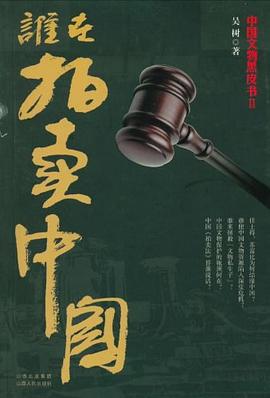Good Strategy Bad Strategy
内容简介
Clears out the mumbo jumbo and muddled thinking underlying too many strategies and provides a clear way to create and implement a powerful action-oriented strategy for the real world
Developing and implementing a strategy is the central task of a leader, whether the CEO at a Fortune 100 company, an entrepreneur, a church pastor, the head of a school, or a government official. Richard Rumelt shows that there has been a growing and unfortunate tendency to equate Mom-and-apple-pie values, fluffy packages of buzzwords, motivational slogans, and financial goals with “strategy.” He debunks these elements of “bad strategy” and awakens an understanding of the power of a “good strategy.”
A good strategy is a specific and coherent response to—and approach for overcoming—the obstacles to progress. A good strategy works by harnessing and applying power where it will have the greatest effect in challenges as varied as putting a man on the moon, fighting a war, launching a new product, responding to changing market dynamics, starting a charter school, or setting up a government program. Rumelt’s
nine sources of power—ranging from using leverage to effectively focusing on growth—are eye-opening yet pragmatic tools that can be put to work on Monday morning.
Surprisingly, a good strategy is often unexpected because most organizations don’t have one. Instead, they have “visions,” mistake financial goals for strategy,
and pursue a “dog’s dinner” of conflicting policies and actions.
Rumelt argues that the heart of a good strategy is insight—into the true nature of the situation, into the hidden power in a situation, and into an appropriate response. He shows you how insight can be cultivated with a wide variety of tools for guiding your
own thinking.
Good Strategy/Bad Strategy uses fascinating examples from business, nonprofit, and military affairs to bring its original and pragmatic ideas to life. The detailed examples range from Apple to General Motors, from the two Iraq wars to Afghanistan, from a small local market to Wal-Mart, from Nvidia to Silicon Graphics, from the Getty Trust to the Los Angeles Unified School District, from Cisco Systems to Paccar, and from Global Crossing to the 2007–08 financial crisis.
Reflecting an astonishing grasp and integration of economics, finance, technology, history, and the brilliance and foibles of the human character, Good Strategy/Bad Strategy stems from Rumelt’s decades of digging beyond the superficial to address hard questions with honesty and integrity.
......(更多)
作者简介
(美)理查德·鲁梅尔特, 《经济学人》评他为“当今25位对管理理念和公司行为最具世界影响力的思想家之一”。
麦肯锡公司则将其形容为“战略中的战略家”。
他是加州大学洛杉矶分校约翰·安德森管理学院教授,在著名的欧洲工商管理学院任教多年。他为全球知名跨国公司担任管理咨询,以其多年的企业管理咨询和研究经验,提出关于战略管理的深刻见解,帮助企业理清思路,迎接挑战。
......(更多)
目录
......(更多)
读书文摘
要培养正确的战略思维,你必须掌握三项技能。。。:第一,你必须拥有多种有效的工具,以克服目光短浅的弊病,促使自己将精力集中到真正需要关注的事情上面。第二,你必须培养自我怀疑的能力。第三,你必须养成记录自己判断的习惯,这样你就可以提高自己的判断力。
所以领导者都有一个重要职责,就是弱化问题的复杂性和模糊性,并在简化之后提供给自己的组织,而这个经过简化的问题是可以解决的。
......(更多)






